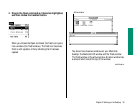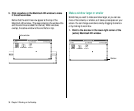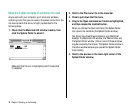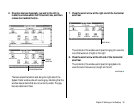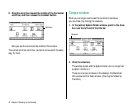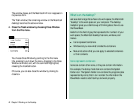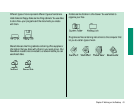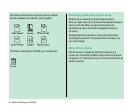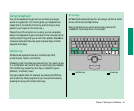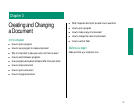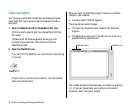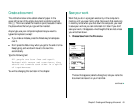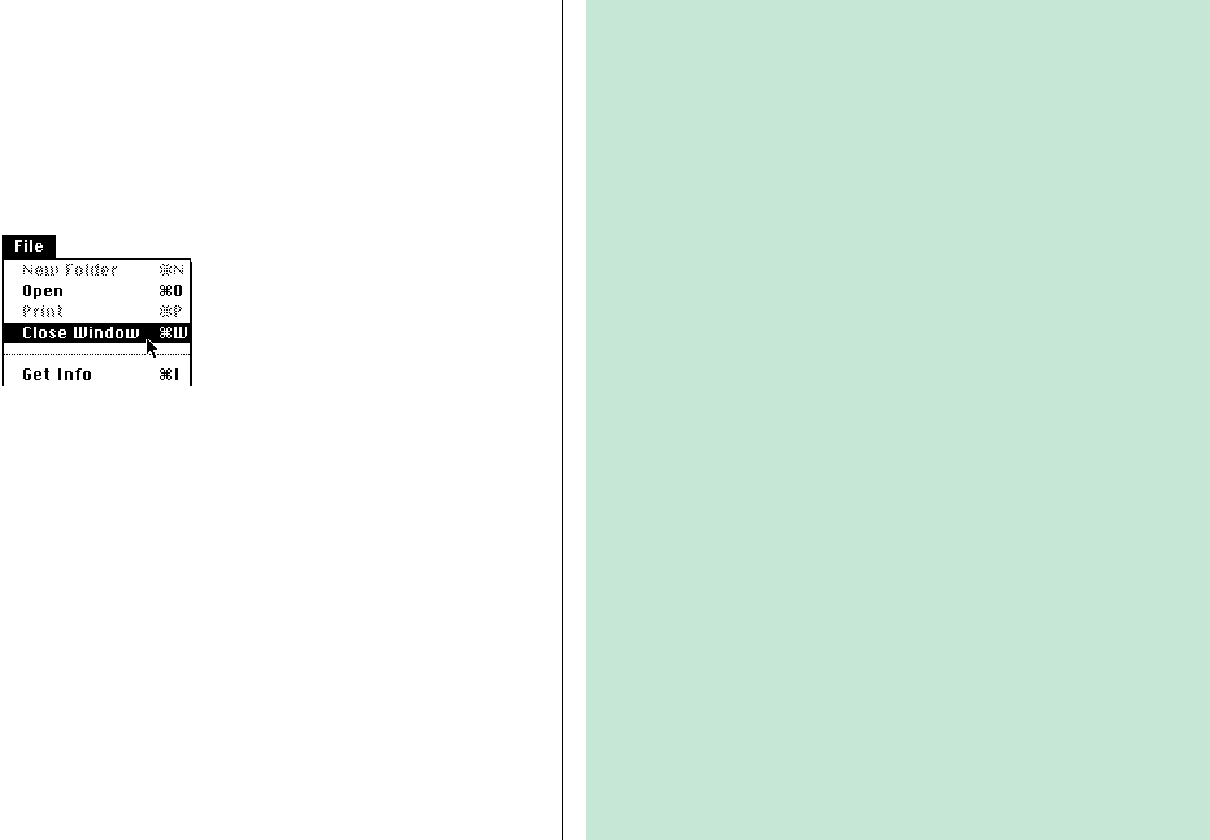
The window closes, and the Macintosh HD icon reappears in
its previous form.
The Trash window (the remaining window on the Macintosh
desktop) becomes the active window.
4. Close the Trash window by choosing Close Window
from the File menu.
You choose Close Window by pointing to the File menu
title, pressing to pull down the menu, dragging to the Close
Window command, and, with the command highlighted,
releasing the trackball button.
Of course, you can also close the window by clicking its
close box.
42 Chapter 2: Working on the Desktop
What’s on the desktop?
Just as a desk’s large flat surface is its work space, the Macintosh
“desktop” is the work space on your computer. The desktop
metaphor gives you a familiar way of thinking about how to use
the PowerBook.
Aside from the field of gray that represents the “surface” of your
work space, the Macintosh desktop has icons, windows, and
menus.
n Icons represent containers.
n Windows let you view what’s inside the containers.
n Menus list actions that you can apply to selected containers
or their contents.
Icons represent containers
Icons can contain other icons, or they can contain information.
For example, the startup hard disk icon contains the System
Folder icon. The System Folder icon contains the programs (also
represented by icons) that in turn contain the information the
PowerBook needs to start itself up and work properly.




